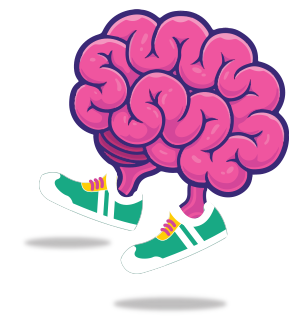What can a high resting heart rate tell you about your training?
 The meaning behind this heart-related metric, plus three strategies for getting back to your baseline.
The meaning behind this heart-related metric, plus three strategies for getting back to your baseline.
Whether you’re a fan of heart-rate training or only dabbled in hitting your zones, you’ve likely noticed your heart rate numbers on a watch or fitness tracker midrun.
But have you ever tapped on the little heart icon or noticed your beats per minute when your body was at rest?
For runners, resting heart rate can be just as meaningful to your training and overall health.
What is a resting heart rate?
As the term suggests, resting heart rate (RHR) refers to the number of times your heart beats per minute when the body is at rest.
You can get a fairly accurate measure using a wearable fitness tracker (chest straps, while less comfortable, tend to deliver more precise results than wrist-worn heart rate trackers) or by using your fingers to count your radial pulse.

“You want to take [a resting heart rate reading] first thing in the morning after a restful night’s sleep, lying on your back, free of any distractions,” Fabio Comana, M.A., M.S., faculty within the School of Exercise and Nutritional Sciences at San Diego State University, tells Runner’s World. If you use a watch, he suggests wearing it on the inside of your wrist so that it can better mold to the skin and soft tissue. Just be careful not to move your arm (or any other part of your body) while taking a reading.
According to the American Heart Association, the range for average resting heart rate is between 60 and 100 beats per minute (bpm). Your own rate can be impacted by several variables, including biological sex, stress, medications, medical issues, hormones, age, and level of regular physical activity.
 Generally speaking, a lower resting heart rate is better.
Generally speaking, a lower resting heart rate is better.
“RHR is considered an indicator of overall cardiovascular fitness or how efficiently you are able to meet your body’s oxygen demands,” says Pamela Geisel, M.S., C.S.C.S., exercise physiologist and the director of performance and wellness services at the Hospital for Special Surgery in New York City. “A lower RHR has been correlated with a lower risk of cardiovascular disease and other illnesses.”
A higher resting heart rate can be a sign of a myriad of health problems. For example, a 2017 meta-analysis of 87 relevant studies found “an increased risk of coronary heart disease, sudden cardiac death, heart failure, atrial fibrillation, stroke, cardiovascular disease, total cancer, and all-cause mortality with greater resting heart rate.”

How does physical fitness play into resting heart rate?
The reason why runners and other athletes typically have lower resting heart rates than their sedentary peers is a matter of adaptation. As you increase your physical activity, “the body says, ‘How can I deliver oxygen to my blood cells more efficiently?’” Comana explains.
The answer: more red blood cells and, therefore, an increased blood volume. To accommodate that higher blood volume, the heart becomes stronger and able to pump out more blood with every contraction. “If you’re able to eject more blood out of the heart with every beat, your heart doesn’t have to beat as many times. So, that’s the reason why your resting heart rate comes down,” Comana says.
 Lessen your training or stop working out, and your resting heart rate will eventually creep back up.
Lessen your training or stop working out, and your resting heart rate will eventually creep back up.
“You no longer have that demand for as many red blood cells,” Comana explains. So, as red blood cells die (they have a lifespan of about four months), the body manufactures fewer new ones, blood volume decreases, and the heart and its stroke volume (the amount of blood it pumps out with each contraction) shrink.
“It’s like a muscle: If you don’t use it, you lose it,” Comana says.
What does a high resting heart rate mean?
So, what if you’re sticking to your regular training schedule and notice that your resting heart rate is elevated?
A single, higher-than-normal reading generally is not cause for concern; dehydration, stimulants, or even a bad night’s sleep could cause a temporary spike.
But if you see your resting heart ratte climbing by eight to 10 beats over the course of seven to 10 days, Comana recommends examining both your workouts and your life in general. You could be overtraining and not allowing your body adequate rest and recovery between workouts.
 On the other hand, your high resting heart rate may have nothing to do with exercise. “A lot of the time, what we consider to be overtraining may not be your program,” he says. “It may be the life stresses that are just dog piles on top of you, because stress is just an accumulation of any disruption of homeostasis.”
On the other hand, your high resting heart rate may have nothing to do with exercise. “A lot of the time, what we consider to be overtraining may not be your program,” he says. “It may be the life stresses that are just dog piles on top of you, because stress is just an accumulation of any disruption of homeostasis.”
How can you lower a high resting heart rate?
To your body, stress is stress; it doesn’t matter if it’s coming from a looming work deadline or back-to-back HIIT workouts. Problems at work, in your relationship, and relating to your finances obviously can’t be avoided—you need to tend to those issues, which is inherently stressful. “But what you can do is control your workouts."
Comana says. “You might need to off-load, de-load, or redirect.”

Off-loading, or stopping exercise altogether, is the most drastic intervention, but it can be incredibly effective. Ever notice how that first run after a few days off can feel like one of your best ever? “You might have been pushing the envelope where you were bordering on overtraining, and we just gave you some time off to allow your body a little bit more time to recuperate, to restore homeostasis. And then you came back feeling refreshed,” Comana says. “Stress is not ordinarily bad, but we need time to recover from it.”
De-loading is the process of temporarily reducing the volume and intensity of training. Comana recommends cutting down to 50% to 70% of what you usually do for your workouts. That means if you run six days a week, you may want to incorporate a couple of extra rest days and, on the days you do train, run at an easier or more moderate pace.
Comana’s third strategy, redirecting, is simply switching up your routine with a new activity, preferably something that feels fun or playful. “Let's take a break from pounding the treadmill and go do something else. Let’s go hike a hill. Let's go swim in the pool,” Comana says. “Go play so it seems like it’s something fun rather than it’s something that you have to do—something that’s part of your training. That’s the idea behind it.”
 If, after adjusting your workouts and lowering your stress levels, you’re still experiencing a high resting heart rate, it’s a good idea to check in with your medical provider. “An elevated heart rate response could be indicative of something bigger, something more problematic,” Comana says. If you implement strategies to lower a high resting heart rate and it’s not coming down, that could be a red flag that should be more thoroughly investigated, he adds. While a high resting heart rate could be tied to several conditions, it would be just one factor at play, so your doctor will do a full exam before making a diagnosis.
If, after adjusting your workouts and lowering your stress levels, you’re still experiencing a high resting heart rate, it’s a good idea to check in with your medical provider. “An elevated heart rate response could be indicative of something bigger, something more problematic,” Comana says. If you implement strategies to lower a high resting heart rate and it’s not coming down, that could be a red flag that should be more thoroughly investigated, he adds. While a high resting heart rate could be tied to several conditions, it would be just one factor at play, so your doctor will do a full exam before making a diagnosis.
Cr: runnersworld.com



